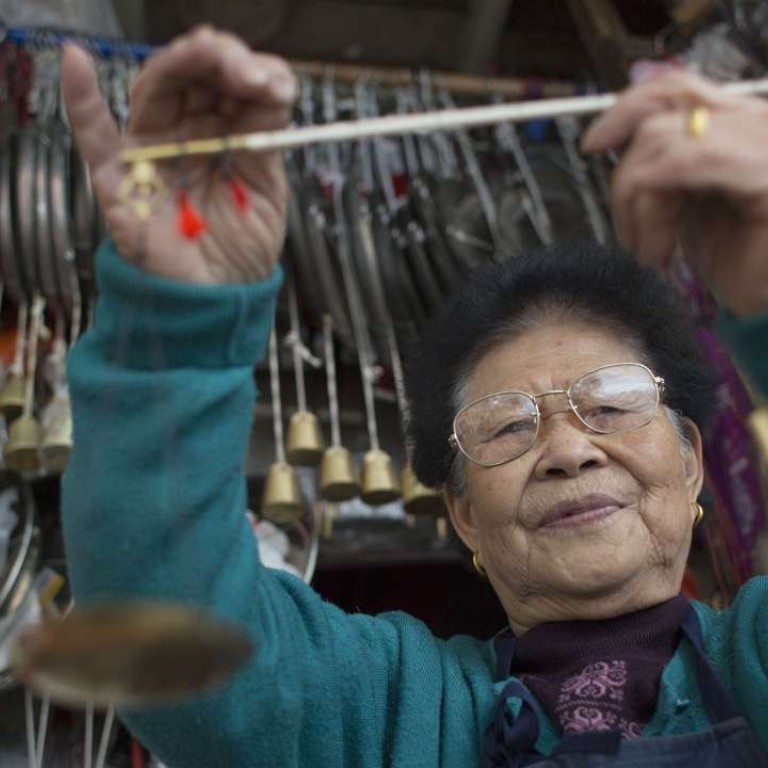
Hong Kong’s Shanghai Street: goldsmiths, craftsmen, kitchenware and prostitutes
Shanghai Street in Kowloon has a history going back to the mid-19th century. It was once as busy as Nathan Road, selling kitchen equipment, gold, jewellery and abacuses, but today only a few older residents recall its colourful past
A failed bank robbery and hostage crisis shone a spotlight on Shanghai Street in 1974, in what remains Hong Kong’s longest siege. But it was just another chapter in the street’s colourful history.
The western coastline of the Kowloon peninsula originally ran alongside the street before a wave of reclamation work in the mid 19th century. Originally called Station Street, after the Yau Ma Tei police station, it was renamed in 1909 to avoid confusion with another street of the same name in Sheung Wan.
The colonial government also expanded the street, levelling a small hill in Jordan to extend it southwards. Today, it runs parallel to busy Nathan Road all the way from Jordan to Prince Edward. With a pier at each end of the strip, it soon became one of Hong Kong’s busiest thoroughfares and a major hub of commercial activity.
Goldsmiths and jewellery makers flourished on Shanghai Street in the 1970s and ’80s, given their proximity to the Yau Ma Tei typhoon shelter and their target customers – the boat-dwelling Tanka people, who put on performances and sold food to locals and tourists.

Instead of depositing their money in the banks, people used to buy small pieces of gold [rings or loops] and chain them around their waistbands
“There used to be more than 20 goldsmiths around us,” the younger Cheung says, while today there is only one other gold shop close to Wo Shing.
“Bank runs occurred quite often back then, so banks were not really trusted. Instead of depositing their money in the banks, people used to buy small pieces of gold [rings or loops] and chain them around their waistbands. So even if they fell into the sea, they wouldn’t lose their fortune,” Cheung says.
The Cheung brothers spent most of their childhood playing outside on Shanghai Street, he says.
“There were very few cars then; it was mostly just bicycles. But there were more than 10 cinemas just on this street.”
They screened martial arts films by Shaw Brothers Studio, and black and white Western classics starring the likes of Charlie Chaplin, he adds.

In the late ’70s, the goldsmiths on Shanghai Street decided they needed to better protect themselves. “We felt scared just sitting in the store,” Cheung says. “All the goldsmiths pooled money to hire four guards, who carried long rifles. One got shot in the leg during a robbery.”

The brothers looked on as the piers and typhoon shelter gave way to reclamation. Eventually, in the early 1990s, the buzz moved to Nathan Road, where bus routes connecting Kowloon and the New Territories run through the wider thoroughfare.
As business began to dwindle, another change came to Shanghai Street in the late 1980s and ’90s, when nightclubs and massage parlours emerged, and prostitution thrived, turning the area into a seedy red light district.
The sex trade became so prominent that police reportedly conducted more than 20,000 raids in and around Mong Kok in 1989 alone. The crackdown had the desired effect, and although the occasional made-up woman in a short skirt can still be seen loitering around a Shanghai Street doorway, today it is almost a haven of peace and quiet in busy Kowloon.

Chan Chi Kee Cutlery, for example, has stood the test of time through sheer hard work and distinguished craftsmanship. “Wherever you find Chinese people, you will find our knives. They are all over the world,” says Chan Kin, a nephew of the business’ late founder after whom the shop is named.

She also sells various types of steel weighing implements known as steelyards, and large wooden ones for weighing Chinese herbs or use in the kitchen. A tiny, delicate steelyard, which measures down to cash (an old East Asian measurement equivalent to 37.8mg) and candareen (378mg), is used for weighing gold and is the most expensive because it’s made out of cow bone.

“This was my father’s store. The thing I admired most about him was his persistence. When he passed away I continued running the store, hoping my father’s trade would still be around for some time,” she says.
Ho now has cataracts and can no longer draw the precise measurements on the steelyards, so the task has been delegated to her father’s apprentices.

Tucked away in an alley, with a barely visible storefront, Leung works seven days a week making strainers, rat traps and crab pots. “Some neighbouring hotels have bought a few of my rat traps,” he says.
The years of hard work have taken their toll on Leung, who no longer has much flexibility in his fingers. Still, it hasn’t deterred the 87-year-old, who embodies the tenacious work ethic of Hong Kong’s older generation.

He acknowledges that today’s values are different from when he was young. “If you want to earn a lot of money, make stuff that is pretty, cheap and breaks easily. Making ones like mine won’t make you rich.”

